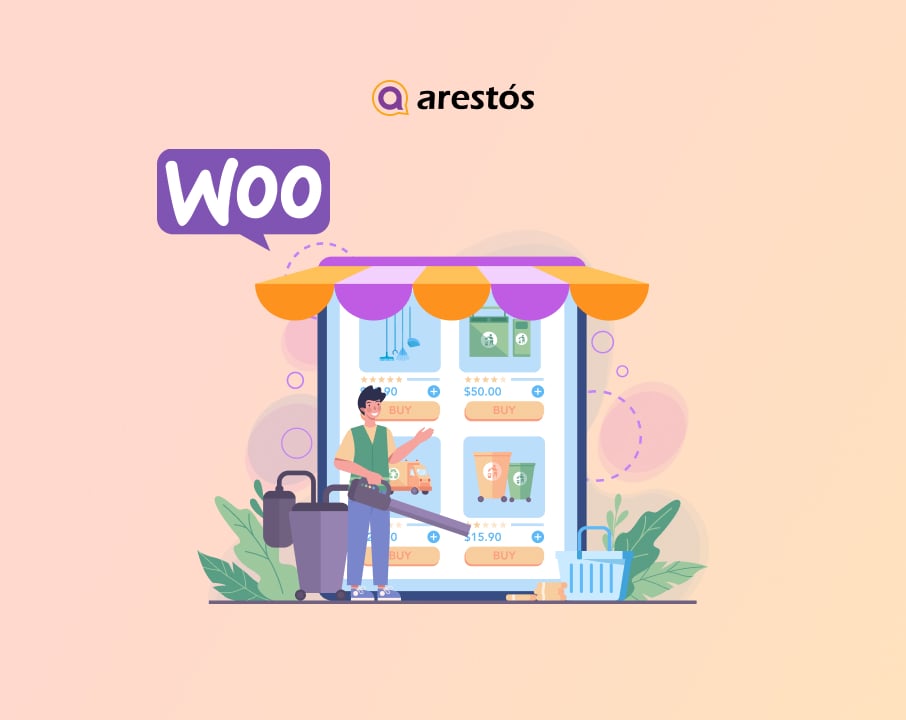10 Must-have UX features for your eCommerce website to increase sales
There are many factors to do to achieve that. One of the most important factors is offering the best user experience to your (potential, new, and returning) customers.
UX Features for eCommerce websites play a key role in driving online sales, which is the final goal of all online stores. Are you confident that your eCommerce site is offering the best e-shopping experience?
Find out the top 10 UX features your eCommerce store should have and how each can help you boost your sales and customer engagement.
MUST-HAVE UX FEATURES FOR YOUR E-COMMERCE WEBSITE
1. Responsive Web Design
Having a mobile-responsive website is more vital than ever, with more than 39% of online buyers making transactions on their mobile devices. Make sure your navigation, photos, text, and whitespace are all mobile-friendly—it might mean the difference between customers staying to explore (and buy!) your site or departing as soon as they arrive.
The following are examples of common responsive website elements that your website should have:
- Hamburgers Menus
- Calls to action for taps
- The navigation menu has been fixed.
- Layout with a single column
2. Promotion Highlighting
Everyone loves getting a little something extra when they shop. Highlighting your store’s special offers with a promo bar above your main navigation encourages your users to make a purchase. These can be limited-time blowout sales, deals of the day, or free shipping when customers spend a certain amount.
3. Product Search Bar
When it comes to online shopping, everyone enjoys acquiring a little something extra. Using a promo bar above your main navigation to highlight your store’s unique deals encourages consumers to make a purchase. Limited-time blowout sales, daily offers, or free shipping when clients spend a specific amount are examples of these.
4. Live Chat
No customer wants to wait hours on hold or an email response; they want information right now. In fact, almost 30% of customers expect a live chat option on e-commerce websites. When it comes to mobile buyers, that number jumps to 62 percent. Having a live support chat available for your users ensures that they can promptly receive the help they need if they have a query or an issue.
By assisting potential customers in finding what they’re looking for, a chat with a live support person on the other end can ultimately help you enhance conversion rates. According to a study by FurstPerson, up to 77 percent of clients will not purchase on a website if there is no live chat option.
5. Popular Product Categories
When users land on your website’s homepage, build a solid first impression by showcasing popular categories. Users explore product categories to understand better what your website has to offer and determine whether you have what they’re looking for.
Shoppers can see your top categories and products by showcasing them, which encourages them to start browsing. It also aids consumers in mentally determining where they should go next on your site, making the purchasing process easier.
6. Best-sellers
Customers must see what you offer as soon as they land on your website by highlighting featured products. If you include a section for featured products, customers will want to explore your website and discover more about your products, such as best-sellers, exclusive items, or top savers.
7. Multiple High-quality Product Photos
Your shoppers want to see precisely what they’re purchasing, and the more you can show them, the better. Provide them with various, high-resolution images of your products so they can zoom in and see the thing from various angles to get a full picture of it. To add a little more life and intrigue to your images, blend product shots with lifestyle photos showing the object in use.
8. Reviews
Product reviews have a significant influence on whether or not customers purchase a product. In fact, according to the Pew Research Center, 50% of Americans under the age of 50 often consult online reviews before purchasing new things. Including real product reviews from past consumers helps increase trust in your products (and business), encouraging first-time buyers to buy.
9. Also-seen Products
Encourage customers to explore your website and products further by displaying items related to the one they’re looking at. You may also take advantage of displaying product bundles that are regularly purchased together to upsell your consumers on other items that will capture their attention.
10. Badges
Customers will trust your website as trust badges inform them it’s safe and secure, which helps them trust it more. You can use these badges to show clients the payment methods your website allows and give them confidence that their payment information is safe.
Certain trust badges, such as certified organic or fair trade food goods, can also help demonstrate the legitimacy of your products. Customers are more likely to complete the purchase process if you display these trust badges on your website.
START DRIVING MORE ACTION ON YOUR STORE
Now that you know the most important UX features of an eCommerce website, the next step is to start implementing them on your own website.
Learn more about Arestós’s end-to-end eCommerce services and how we can help your business drive more online sales.



